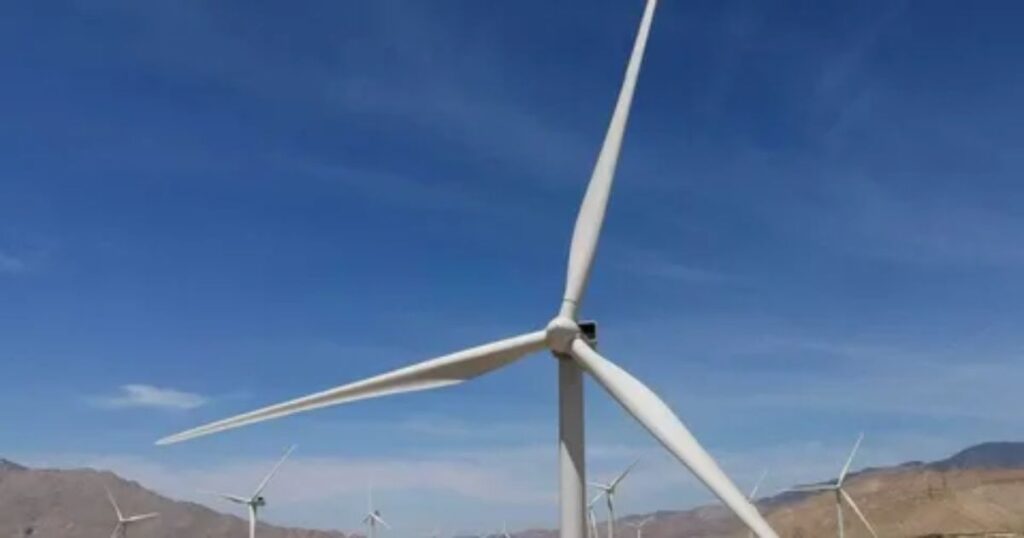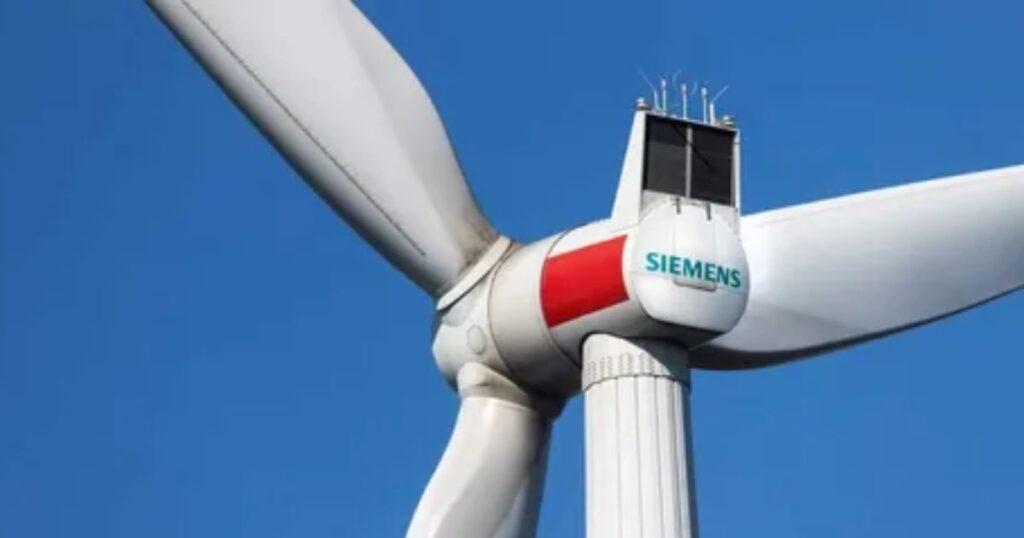Wind power financing is a crucial aspect of the renewable energy sector enabling the growth and development of wind energy projects. Understanding how this financing works is essential for investors, developers, and anyone interested in renewable energy. This article will delve into the intricacies of wind power financing exploring various financing models the role of government incentives and the challenges faced in securing funds for wind energy projects.
Wind power financing involves several steps and stakeholders, including government agencies, private investors, banks, and sometimes even community groups. The primary goal is to secure enough funding to cover the high upfront costs associated with wind energy projects while ensuring a reasonable return on investment (ROI). The complexity of financing arises due to the large capital required and the long payback period, which often extends over several years or even decades.
The Basics of Wind Power Financing
The financing of wind power projects involves securing funds to develop, construct, and operate wind farms. It includes a combination of debt, equity, and sometimes grants. The funds are used to cover the costs associated with the project, such as land acquisition, turbine installation, grid connection, and ongoing maintenance.
- Debt Financing: This is the most common form of financing, where the project developer borrows money from banks or financial institutions. The loan is typically secured against the project’s future revenue.
- Equity Financing: In this model, investors provide capital in exchange for ownership stakes in the project. This can include private equity firms, venture capitalists, or even public offerings.
- Grants and Subsidies: Governments often provide grants or subsidies to promote renewable energy projects. These funds can significantly reduce the overall cost of the project.
The process of securing financing begins with a detailed feasibility study, assessing the potential of the wind farm, including wind resource assessment, environmental impact studies, and financial modeling. The results of this study are crucial in attracting investors and securing loans.
Government Role in Wind Power Financing
Government incentives play a pivotal role in wind power financing making renewable energy projects more attractive to investors. These incentives can come in various forms, including tax credits, feed-in tariffs, and renewable energy certificates.
The Production Tax Credit (PTC) is a federal incentive in the United States that provides a per-kilowatt-hour tax credit for electricity generated by wind energy. This credit can significantly enhance the financial viability of a wind power project.
- Feed-in Tariffs (FiTs): These are policies designed to encourage the adoption of renewable energy by providing long-term contracts to renewable energy producers. The price paid to producers is typically higher than the market rate, ensuring a steady income stream.
- Renewable Energy Certificates (RECs): These are tradable certificates that represent proof that electricity has been generated from a renewable energy resource. They can be sold to other companies, providing additional revenue for the wind farm.
Government incentives are essential in reducing the financial risk associated with wind power projects, making them more appealing to investors. However, the availability and level of incentives can vary significantly depending on the country and region.
Power Purchase Agreements in Wind Power Financing

Power Purchase Agreements (PPAs) are long-term contracts between a wind farm and a buyer, usually a utility company or a large corporation. These agreements play a critical role in wind power financing by providing a guaranteed market for the electricity generated by the wind farm.
The PPA sets the terms for the sale of electricity, including the price per kilowatt-hour, the duration of the contract, and the volume of electricity to be supplied. By securing a PPA, wind farm developers can demonstrate to investors and lenders that the project has a stable revenue stream, reducing the financial risk.
- Fixed-Price PPAs: These agreements lock in a fixed price for the electricity over the contract term, providing certainty for both the buyer and the seller.
- Market-Based PPAs: In this model, the price of electricity fluctuates based on market conditions, which can offer higher returns but also comes with increased risk.
PPAs are essential for the success of wind power projects, as they provide the financial security needed to attract investment and secure loans.
Role of Debt And Equity in Wind Power Financing
Debt and equity are the two primary sources of financing for wind power projects. Understanding the balance between these two forms of financing is crucial for the success of a project.
- Debt Financing: This involves borrowing money to finance the project, typically from banks or other financial institutions. The loan is repaid over time, usually with interest. Debt financing is attractive because it allows developers to retain ownership of the project, but it also comes with the obligation to repay the loan regardless of the project’s performance.
- Equity Financing: In contrast, equity financing involves raising capital by selling ownership stakes in the project. This can include private equity firms, venture capitalists, or even public offerings. While equity financing does not require repayment, it does dilute the ownership of the original developers.
The decision between debt and equity financing depends on various factors, including the project’s risk profile, the availability of financing, and the developer’s financial strategy. Many wind power projects use a combination of both, known as project finance or leveraged finance, to optimize the financial structure.
Challenges in Securing Wind Power Financing
Securing financing for wind power projects can be challenging, particularly in regions with less established renewable energy markets. Several factors can make it difficult to obtain the necessary funds, including market volatility, regulatory uncertainty, and high upfront costs.
The high capital costs of wind power projects are a significant barrier to financing. Wind turbines, land acquisition, and grid connection require substantial upfront investment, which can be difficult to secure, especially for smaller developers.
- Regulatory Risk: Changes in government policies or regulations can impact the financial viability of a project, making it more challenging to secure financing. Investors and lenders are often wary of projects in regions with unstable regulatory environments.
- Market Volatility: Fluctuations in energy prices can also pose a risk to wind power projects. In markets with volatile energy prices, securing a stable revenue stream through mechanisms like PPAs becomes even more critical.
Despite these challenges, the growing demand for renewable energy and the increasing availability of government incentives make wind power financing an attractive opportunity for investors.
Innovations in Wind Power Financing

The wind power sector is continually evolving with new financing models emerging to meet the needs of developers and investors. These innovations are helping to overcome some of the challenges associated with wind power financing. The Green Bonds are a relatively new financing tool that allows investors to fund environmentally friendly projects, including wind power. Green bonds provide a way for investors to support renewable energy while also earning a return on their investment. Another emerging trend in wind power financing is crowdfunding where individuals or small investors contribute to the funding of a wind power project.
This model allows developers to raise capital from a large pool of small investors, often in exchange for a share of the project’s profits. These are publicly traded companies that own and operate renewable energy assets, including wind farms. Yieldcos provide a way for investors to gain exposure to the wind power sector while also benefiting from the steady income generated by the assets. These innovative financing models are helping to make wind power projects more accessible to a broader range of investors, driving the growth of the renewable energy sector.
Environmental Considerations in Wind Power Financing
Environmental and social considerations are increasingly important in wind power financing. Investors and developers are recognizing the need to ensure that wind power projects are not only financially viable but also environmentally and socially responsible.
The Environmental Impact Assessments (EIAs) are a critical component of wind power financing. These assessments evaluate the potential environmental impacts of a wind power project, including its effects on local wildlife, habitats, and ecosystems. A positive EIA is often required to secure financing.
- Community Engagement: Social considerations, such as community engagement and support, are also essential. Wind power projects can have significant impacts on local communities, including changes to the landscape and potential noise issues. Engaging with local communities and addressing their concerns is crucial for securing the necessary permits and financing.
- Sustainable Financing: Many investors are now focusing on sustainable financing, which considers environmental, social, and governance (ESG) factors. This approach ensures that wind power projects contribute to broader sustainability goals and are aligned with the values of socially responsible investors.
By addressing environmental and social considerations, wind power projects can attract a broader range of investors and secure the necessary financing.
The Future of Wind Power Financing
The future of wind power financing looks promising, with increasing investment in renewable energy and growing recognition of the need for sustainable energy sources. The global demand for renewable energy is expected to continue growing, driven by concerns about climate change and the need to reduce greenhouse gas emissions. This demand will likely lead to increased investment in wind power, creating new opportunities for financing. Governments worldwide are likely to continue supporting wind power through incentives, grants, and favorable policies.
This support will be crucial in making wind power projects financially viable and attractive to investors. As the wind power sector continues to evolve, new financing models and tools will likely emerge, making it easier for developers to secure the necessary funds. These innovations will help overcome some of the challenges associated with wind power financing and drive the growth of the sector. The future of wind power financing is bright, with increasing investment, technological advancements, and supportive policies driving the growth of the renewable energy sector.
Frequently Asked Questions
What is the primary source of financing for wind power projects?
The primary sources of financing for wind power projects are debt and equity. Debt financing involves borrowing money, usually from banks, to fund the project, while equity financing involves raising capital by selling ownership stakes in the project.
How do government incentives impact wind power financing?
Government incentives, such as tax credits, feed-in tariffs, and renewable energy certificates, play a crucial role in wind power financing. These incentives reduce the financial risk of projects, making them more attractive to investors.
What are Power Purchase Agreements and why are they important?
Power Purchase Agreements (PPAs) are long-term contracts between a wind farm and a buyer, usually a utility company. They provide a guaranteed market for the electricity generated, ensuring a stable revenue stream and reducing financial risk.
What challenges are associated with securing financing for wind power projects?
Challenges in securing financing for wind power projects include high capital costs, regulatory uncertainty, and market volatility. These factors can make it difficult to obtain the necessary funds, particularly in regions with less established renewable energy markets.
Conclusion
The wind power financing landscape is complex, involving a mix of debt, equity, government incentives, and innovative financing models. While challenges exist, the growing demand for renewable energy and technological advancements are making wind power projects increasingly viable. By understanding the various aspects of wind power financing investors and developers can better navigate this dynamic sector and contribute to the sustainable energy sources.
The use of debt financing allows developers to leverage their capital, enabling them to undertake larger projects than they could otherwise afford. Equity investors typically expect higher returns than lenders, as they are taking on more risk. To attract equity investors, developers must demonstrate the project’s potential for strong financial performance.
